On the evevning of 22nd November 1943 the crew of this 1664 Heavy Conversion Unit aircraft were undertaking a basic night flying exercise around the area of their home airfield of Croft. The exercise was to fly a series of circuits of the airfield and making landings to gain the crew basic experience of flying the aircraft at night. Flying with them was an instructor. The first four take-offs, flying the circuit of the airfield and resulting landings all went well. At 19.16hrs the aircraft took off for the fifth circuit of the airfield but did not climb away as would normally have been expected. Ten minutes after it left the ground it flew into rising ground directly in a line with the end of the runway in use at Croft at the time, it crashed near the Blue Anchor Farm at Scotch Corner. Six of the seven airmen flying in the aircraft died as a result of this accident but the trainee pilot remarkably appears to have escaped serious injury. The crash investigation reports are slightly confusing, the Form Am1180 states that the aircraft had simply not gained height after taking off from Croft, while the Form Am765c states that there was a fire in the air but that the trainee pilot believed that the aircraft had flown normally to 500 feet above the ground just prior to the crash. As a result I have not yet come to any absolute conclusions about what actually happened. To make this harder the AM765c also stated "cause is very unclear" and that the AIB were asked to investigate. Of note is that there was no navigator flying on this training exercise. The area of Blue Anchor Farm was completely re-developed when the newer A66 / A1 roundabout was created after the war. Alongside this the A1(M) motorway upgrade that took place in 2016 has seen the general area of the crash site again be transformed further. The Blue Anchor Farm was on the south side of the roundabout with the crash site possibly long since under the tarmac of the A1. The unit code is given as being "-O" and also "-U" in various original documents that mention this incident, I have yet to confirm which was correct. The incident is mentioned in a No.6 Group flying control log and this states that at 20.30hrs (an hour after the crash) that two of the crew were alive, with one at Scorton airfield and the other "with the Army", two were confirmed dead with three unaccounted for. By 11.05hrs the following morning there were six dead and only one still alive, being treated at Northallerton Hospital. Who died overnight is not known.
Instructor Pilot - F/O James Vaughan Williamson RAFVR (148444), aged 23, of Edinburgh. Buried Harrogate Stonefall Cemetery, Yorkshire (C.E.6).
Pupil Pilot - F/Sgt John Neil Millroy RCAF (R/144154). Of Toronto, Ontario, Canada. Injured.
Flight Engineer - Sgt Maurice Noel Graham Swindle RAFVR (1675628), aged 20, of Keswick, Cumbria. Buried Keswick Churchyard, Cumbria.
Bomb Aimer - Sgt Stephen Williams Litynesky RCAF (R/157050), aged 27, of Ashville, Manitoba, Canada. Buried Harrogate Stonefall Cemetery, Yorkshire (C.E.4).
Wireless Operator / Air Gunner - F/Sgt Sydney Robert Doney RCAF (R/59859), aged 22, of Winnipeg, Manitoba, Canada. Buried Harrogate Stonefall Cemetery, Yorkshire (C.E.5).
Air Gunner - Sgt Neil James Collins RCAF (R/190935), aged 21, of Toronto, Ontario, Canada. Buried Harrogate Stonefall Cemetery, Yorkshire (C.E.3).
Air Gunner - Sgt Robert Bryson Sellars RAFVR (1893889), aged 19, of Glasgow. Buried Cardonald Cemetery, Glasgow.
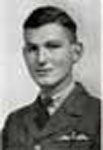
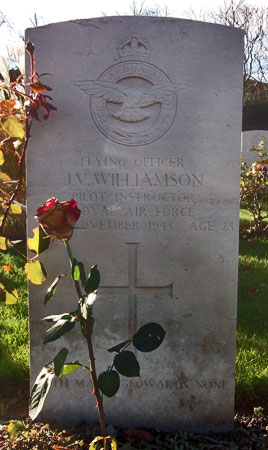
James Williamson was born Edinburgh on 17th September 1921. He was educated at Victoria College, Westbury, Wiltshire and then trained and worked as a chartered accountant until joining the RAFVR in 1940. Between gaining his Wings and 1943 he is listed elsewhere on the internet as having served in the Middle East theatre, probably flying Wellingtons. Back in the UK he was posted to 158 Squadron on 19th February 1943 from 1652 HCU. He received a commission to the rank of P/O on probation on 3rd May 1943 and rose to F/O six months later. I found the photograph of him on the internet in the early 2000s but cannot recall where, the resolution is so poor that it cannot be enlarged further. I would welcome a better quality photograph and any additional details about his service.
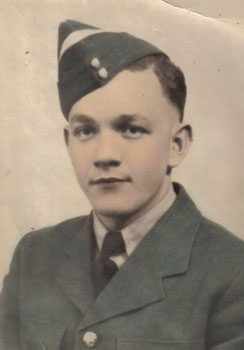

Neil Collins was born on 25th April 1922 in Toronto, Ontario, Canada and was a son of William David and Mary Josephine (nee Parker) Collins. He was one of twelve siblings. As a young man he was working as a lathe operator when he enlisted for RCAF service on 11th September 1942 in Toronto. He trained as an air gunner and was awarded his air gunners' flying badge on 25th June 1943. On arrival in the UK in July 1943 he trained at 24 OTU before posting to 1664 HCU on 7th October 1943. I thank his nephew John Collins for contacting me in 2011 and for the additional information and photograph shown here.


Stephen Litynesky was born on 19th April 1916 in Gilbert Plains, Manitoba, Canada and was the son of Vasil and Julia (nee Osowich) Litynesky who were farmers. Both his parents were Austrian-Ukrainian (Galician) but had emigrated to Canada and became naturalised Canadians. The family later moved down the road to Ashville, Manitoba. After leaving school in 1933 he worked on the family farm until 1941 when he moved to Fort William, Ontario to work as a fitter for the Canadian Car and Foundary company. C.C.F. were involved in manufacturing products for the war effort including Hawker Hurricanes on contract. He enlisted for RCAF service in Fort William on 20th February 1942 for aircrew duties and after training he was awarded his air bombers' flying badge on 19th March 1943. He then arrived in the UK in May 1943 and had trained at 10 (O)AFU and 24 OTU before posting to 1664 HCU on 7th October 1943.
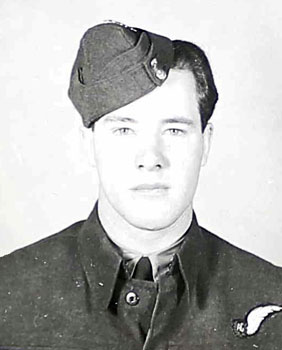
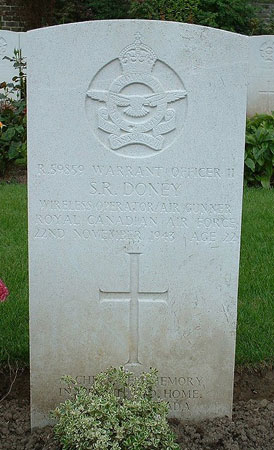
Sydney Doney was born on 13th August 1921 in Winnipeg, Manitoba, Canada and was the son of Sydney and Jane Lathen (nee Jenner) Doney. Both his parents were born in England but had emigrated to Canada and his father was a fireman in Winnipeg. Sydney (Jnr) was fresh out of high school in Summer 1940 when he enlisted for RCAF service, for ground duties to serve as an aero engine mechanic but after five months of service was discharged for being absent without leave over the Christmas and New Year period of 1940. He then re-enlisted on 26th June 1941 this time for aircrew duties and trained as an air gunner, receiving his air gunners' flying badge on 8th June 1942. Over the next months he then did wireless operator training and served in Canada until being posted to the UK in May 1943. On arrival in the UK he trained at 4 AOS and 24 OTU and was then also posted to 1664 HCU on 7th October 1943.

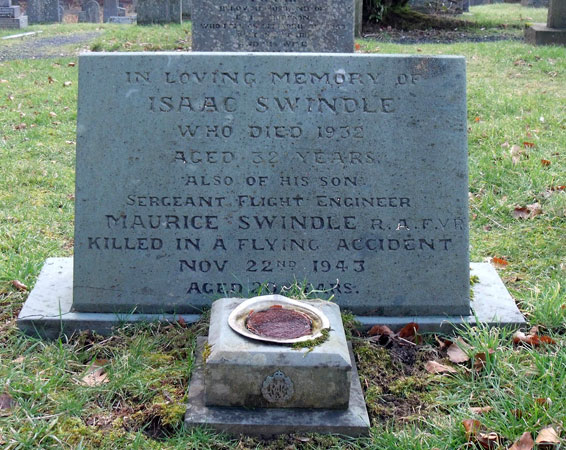
Maurice Swindle's grave in Keswick Churchyard and the Keswick war memorial. Maurice was the son of Isaac Clark and Florence Mary (nee Graham) Swindle.